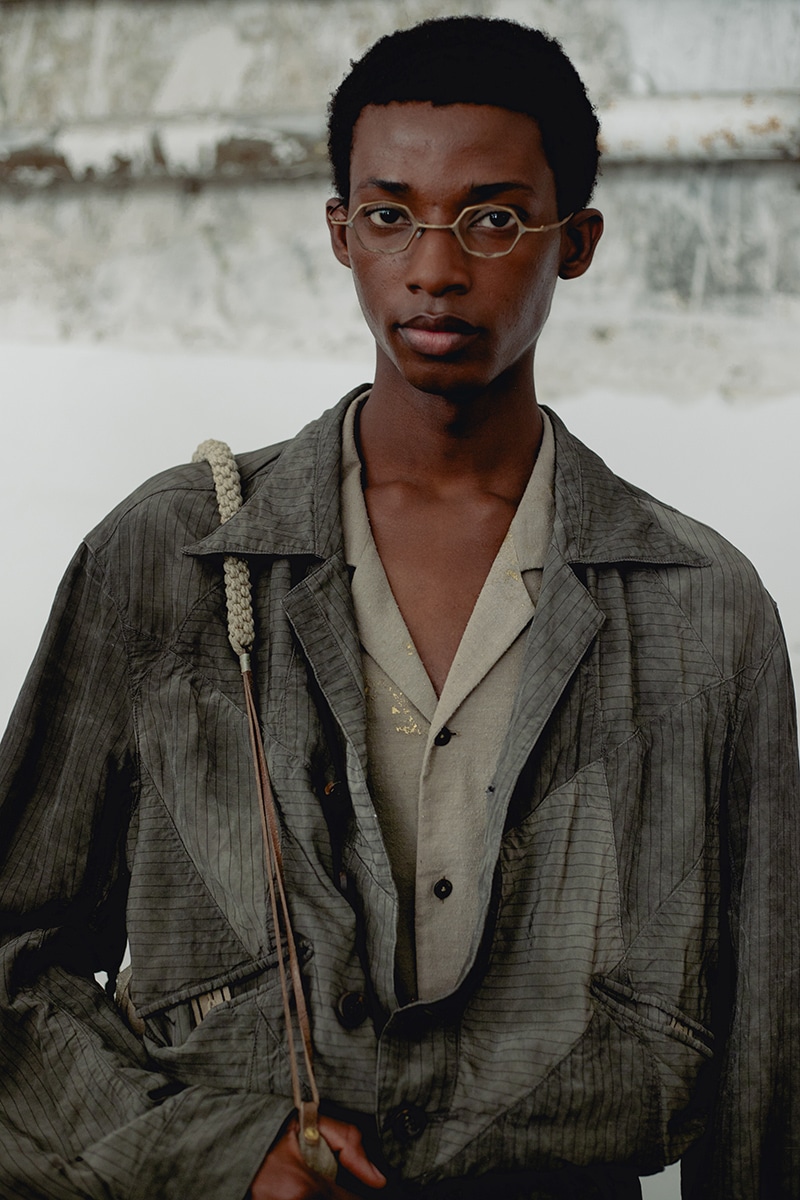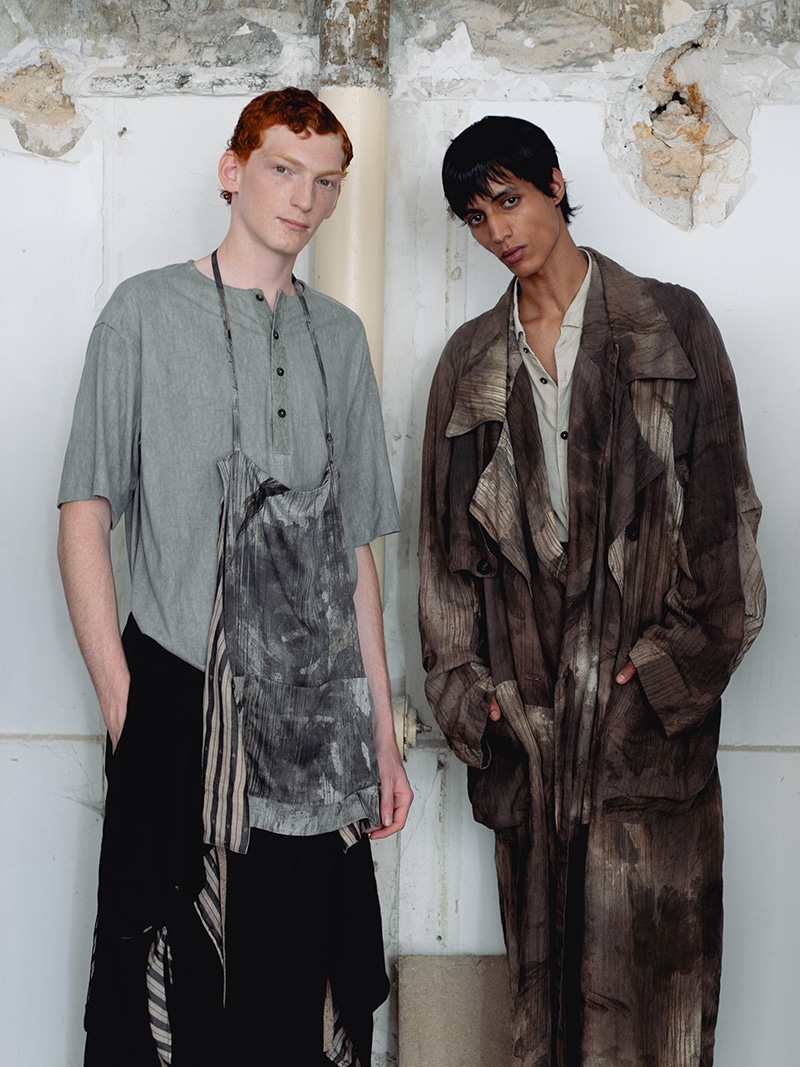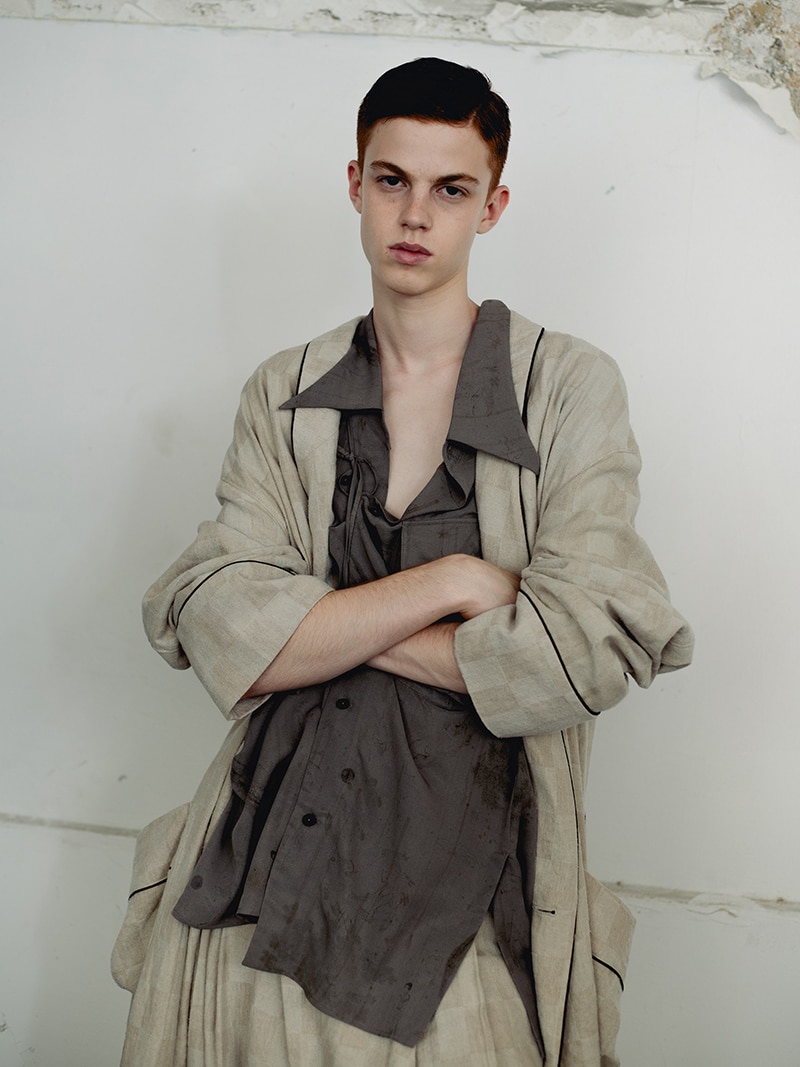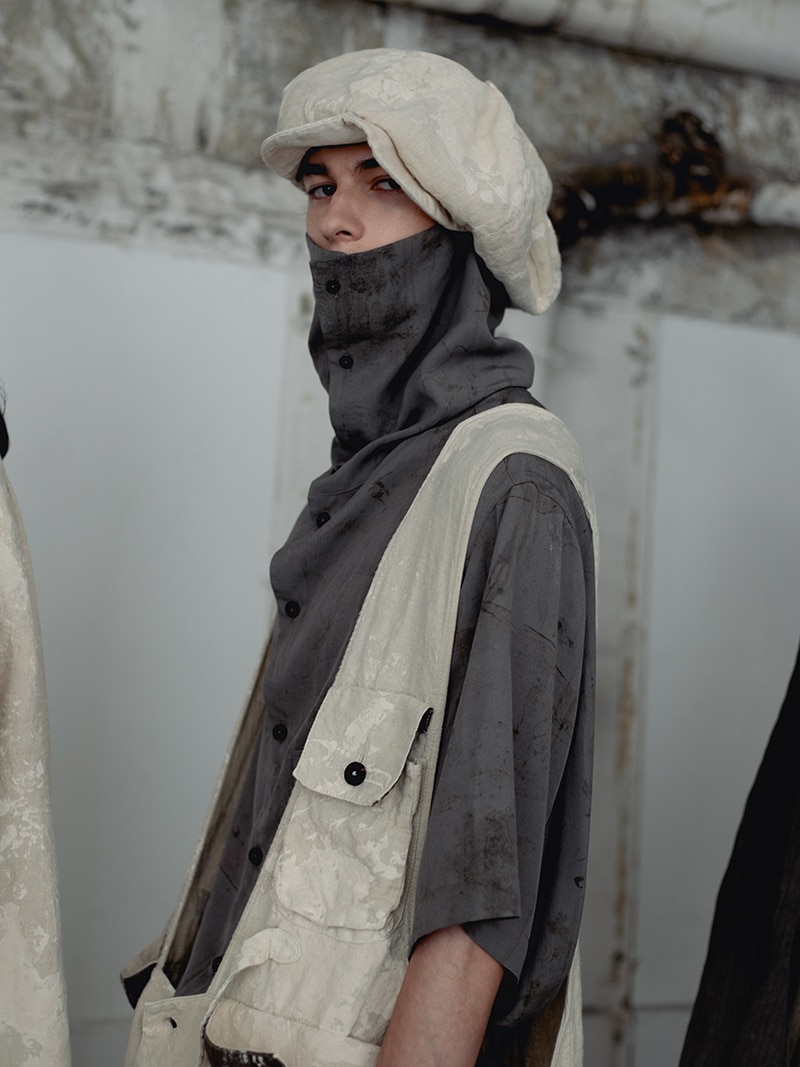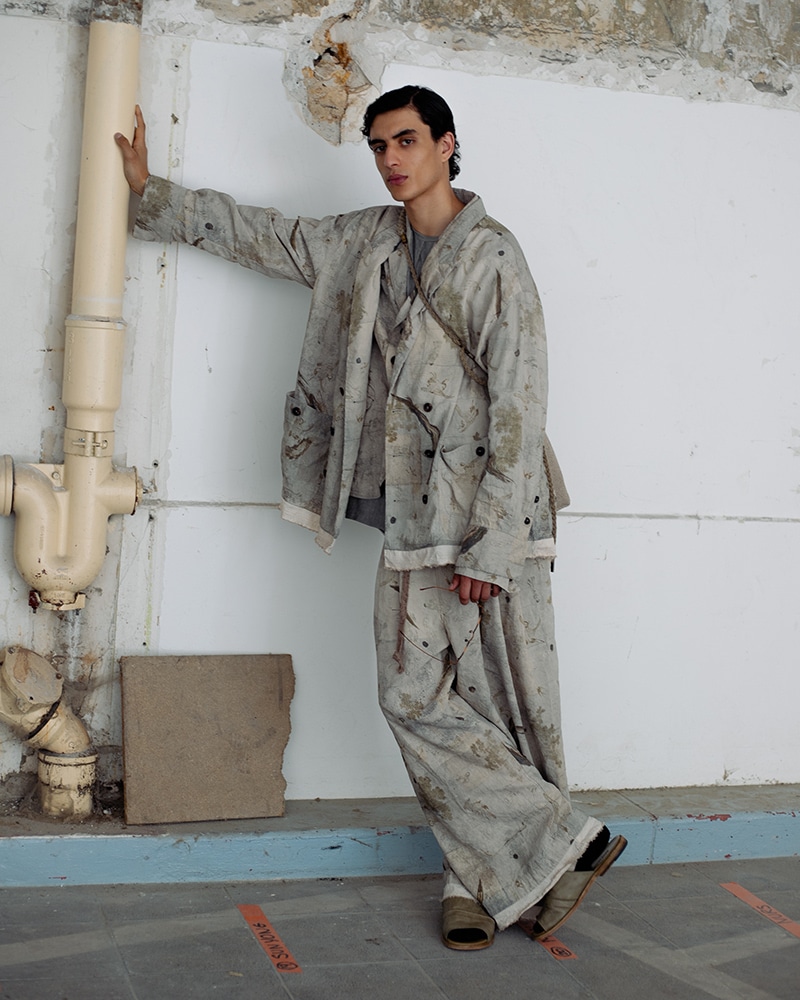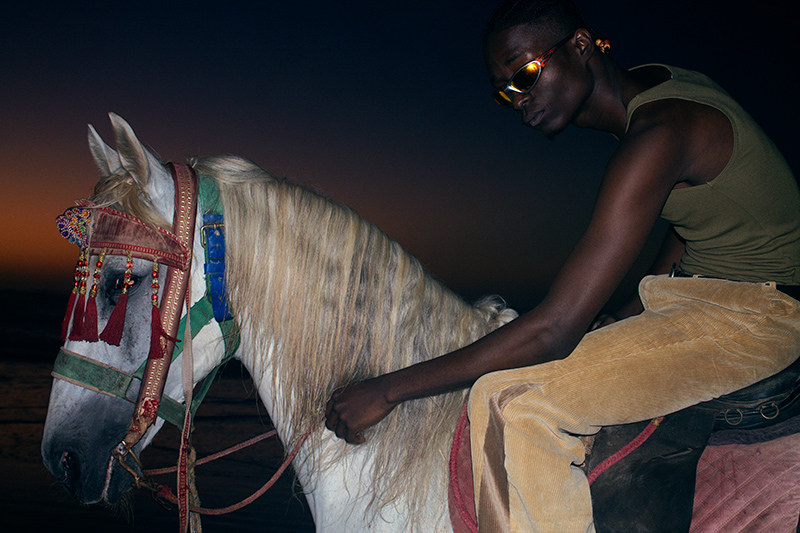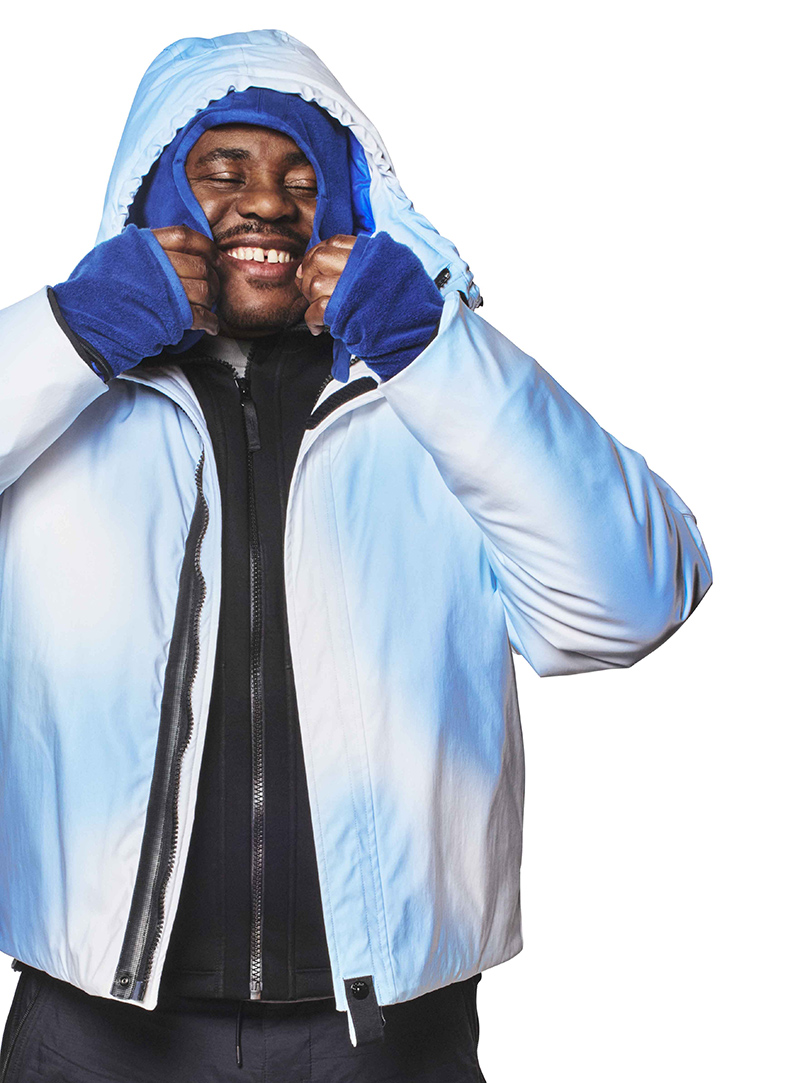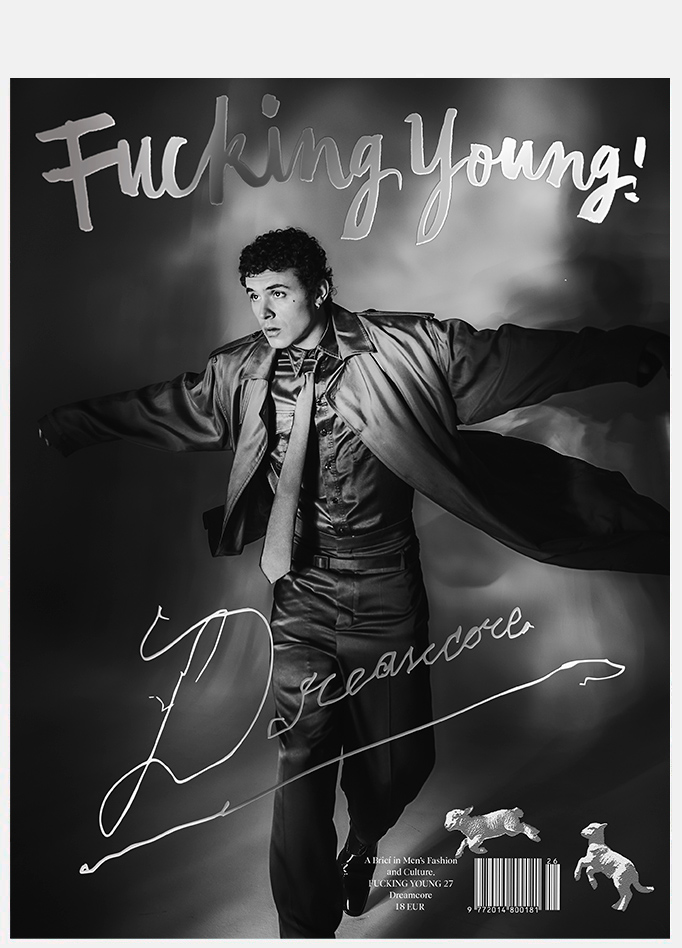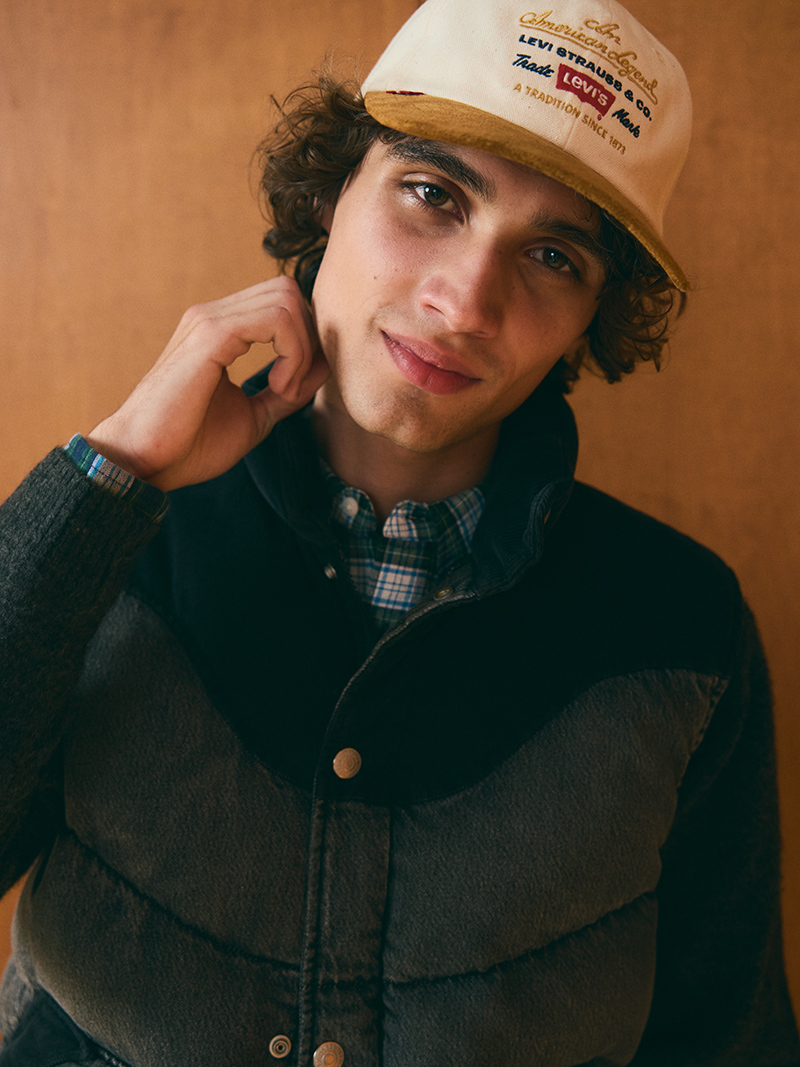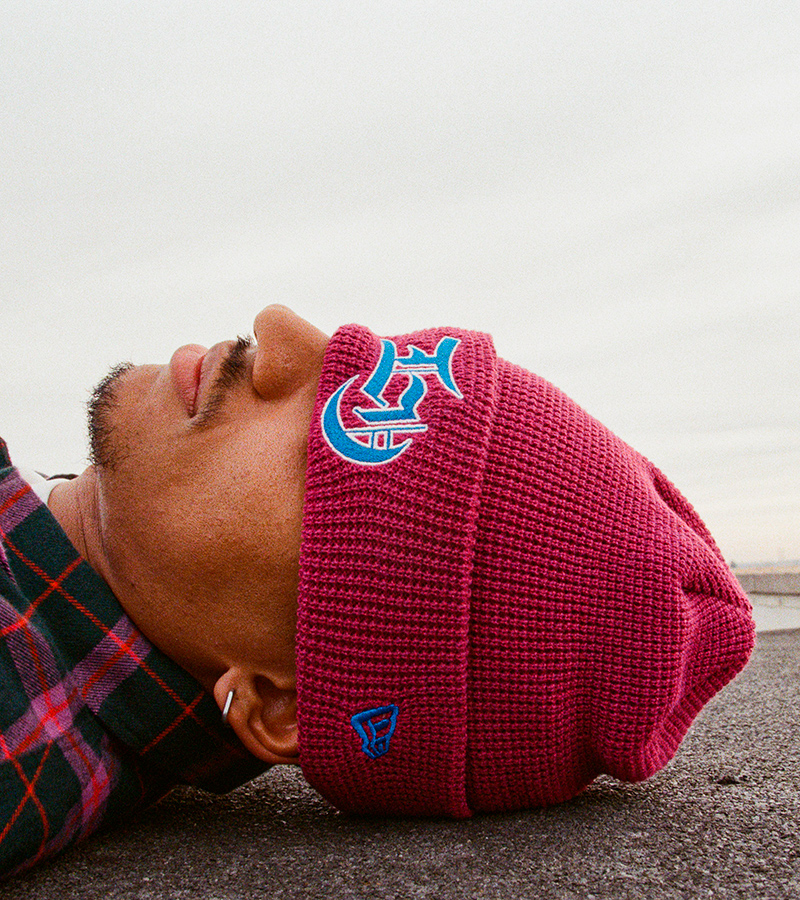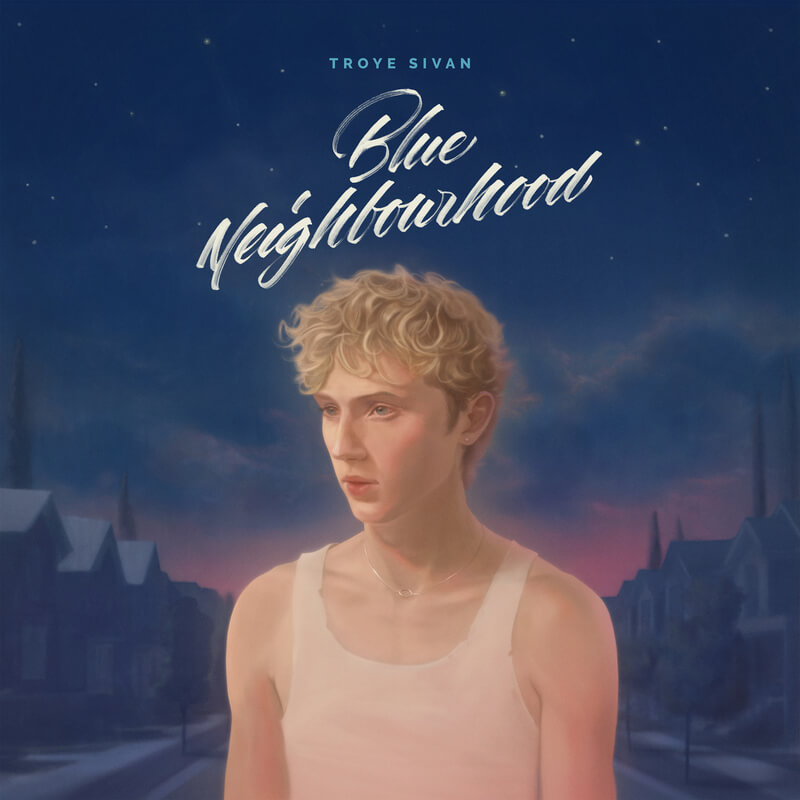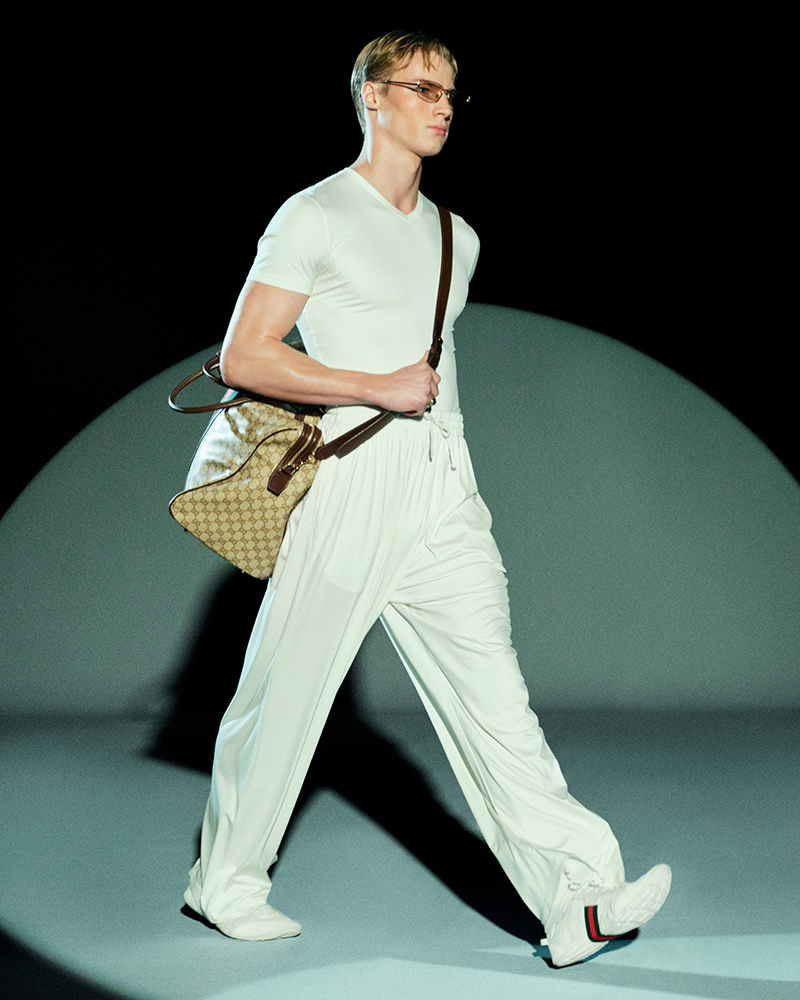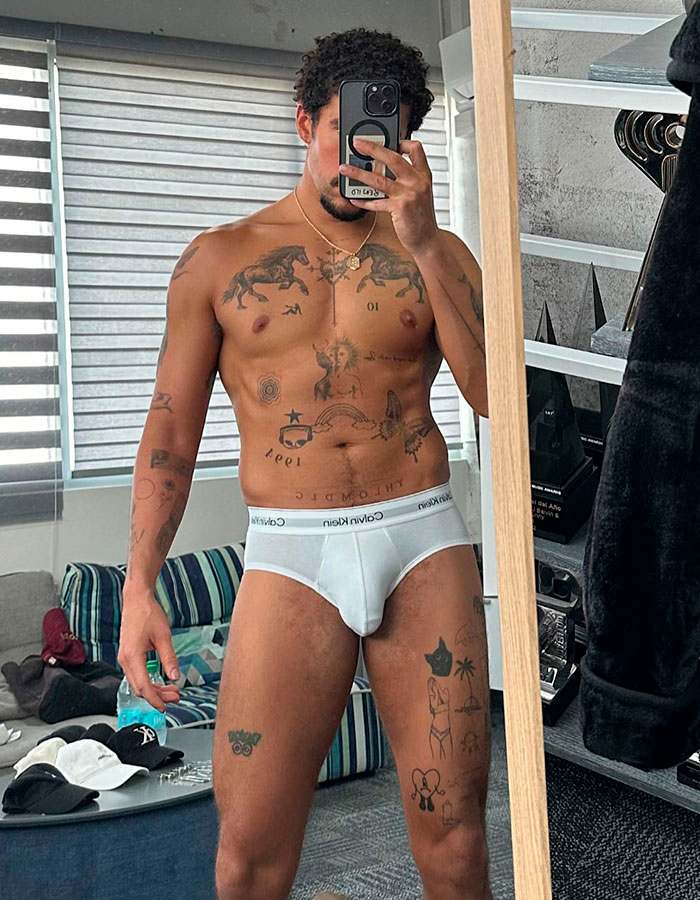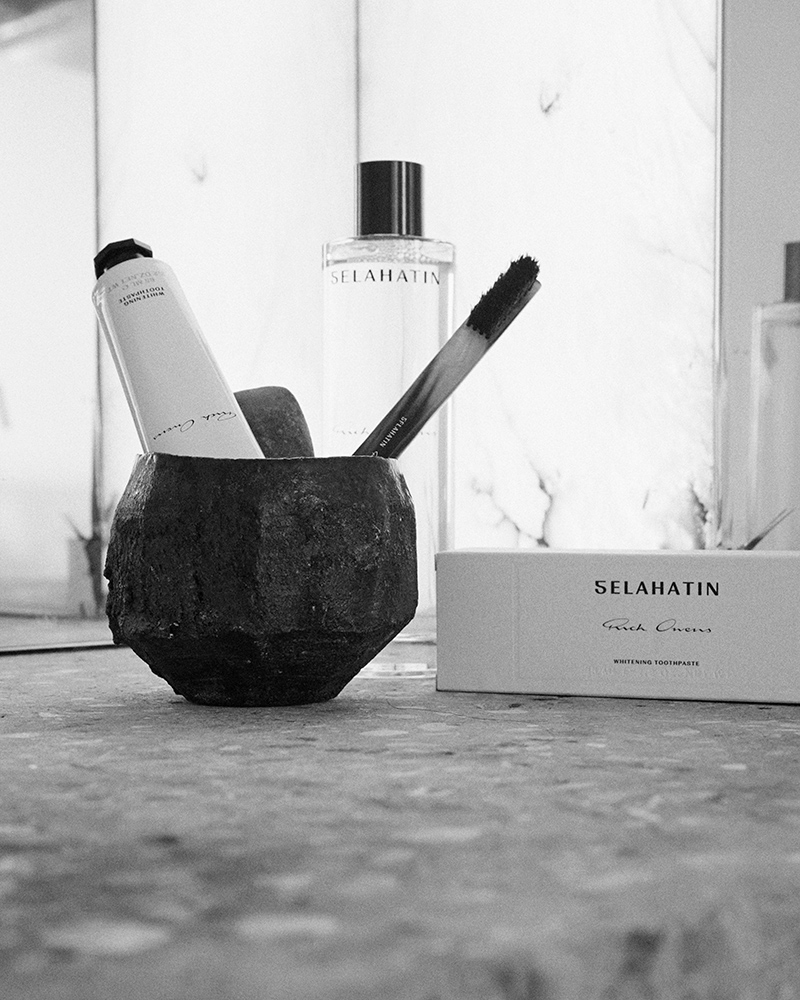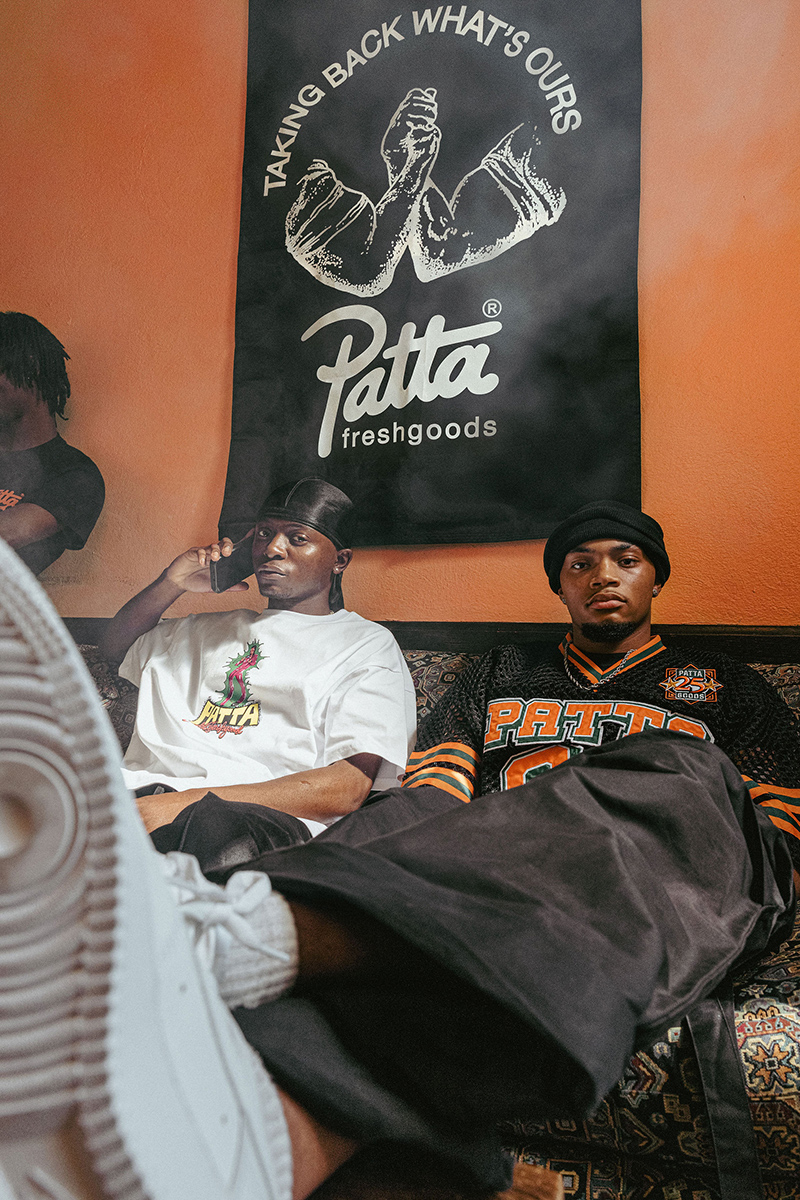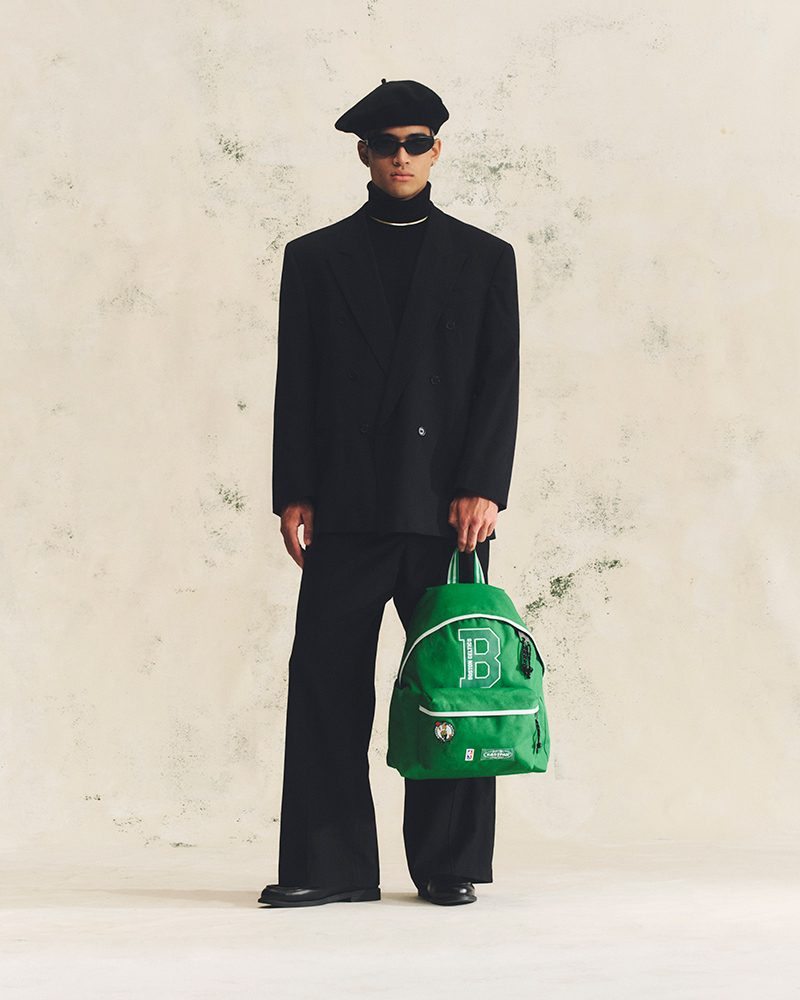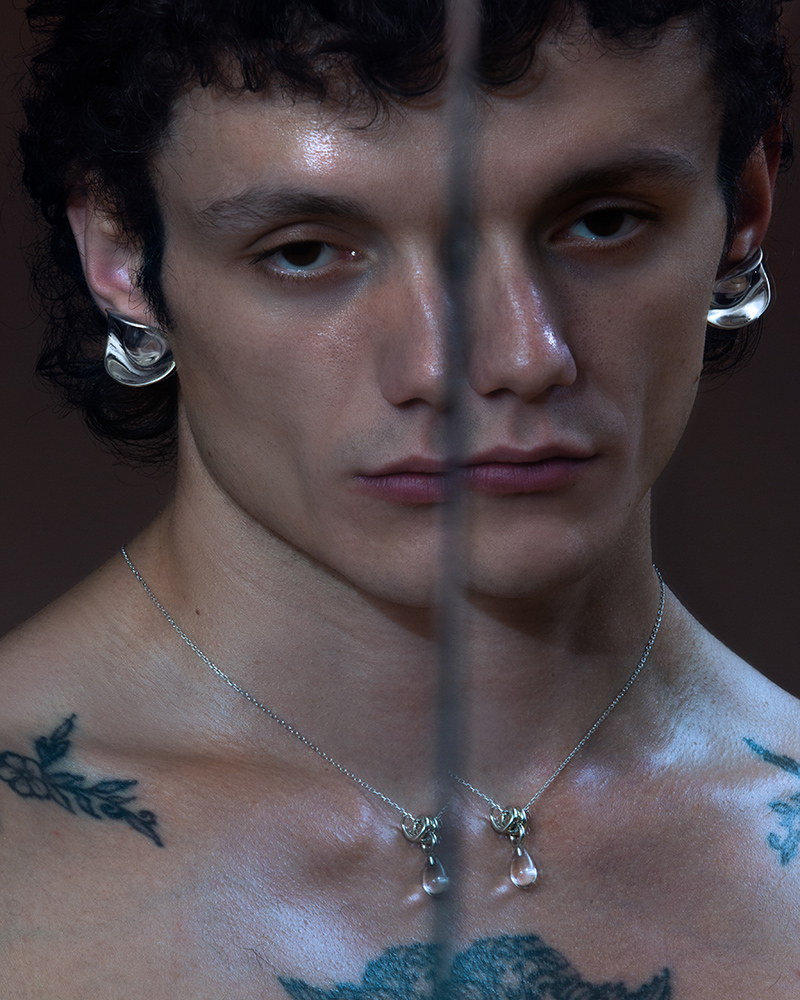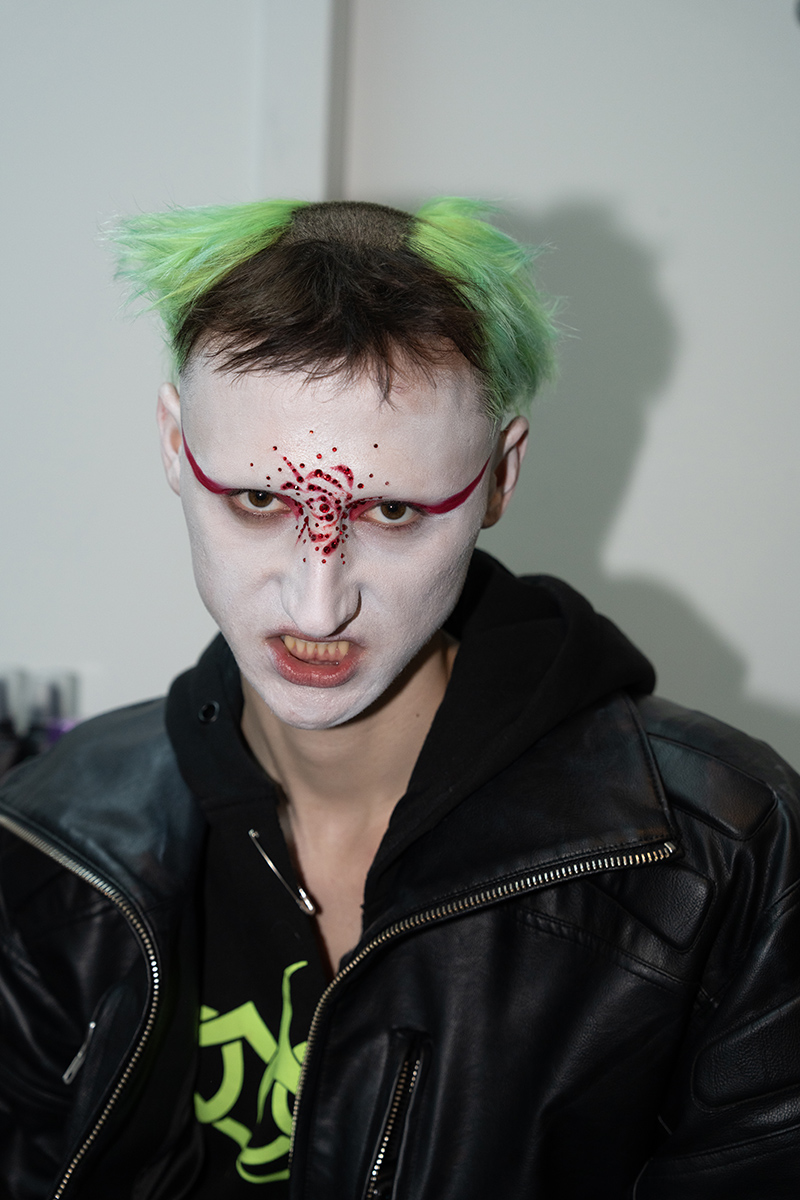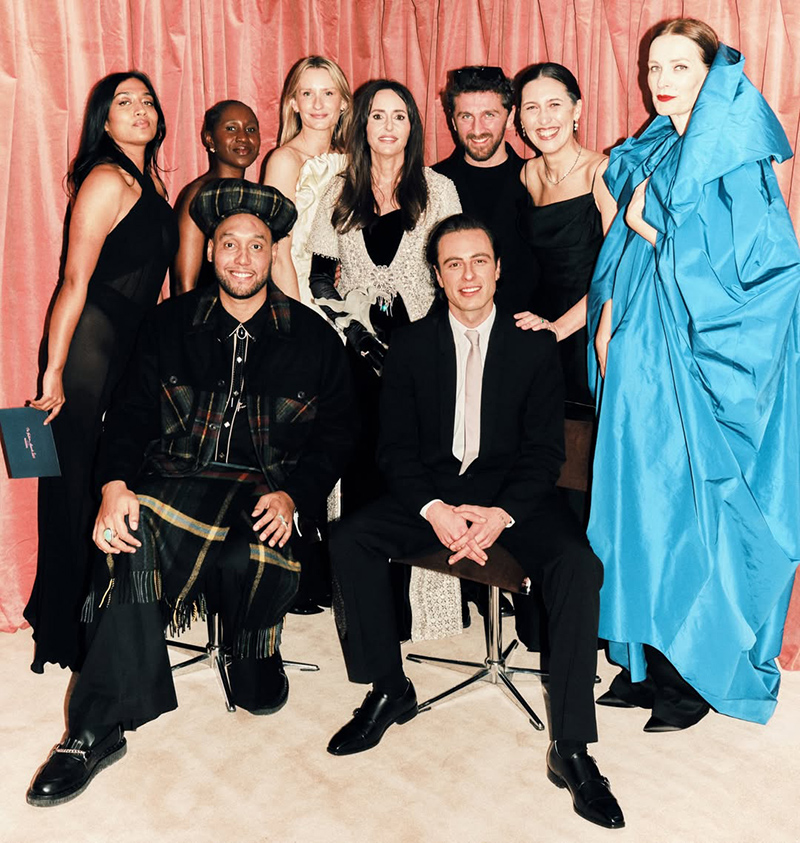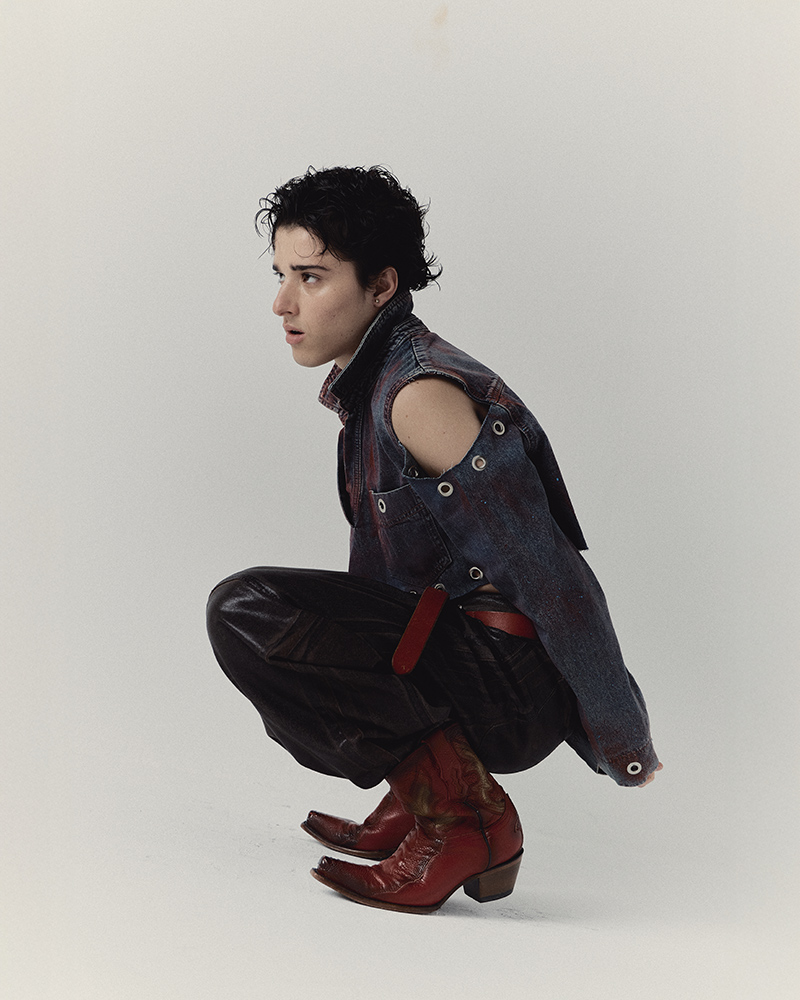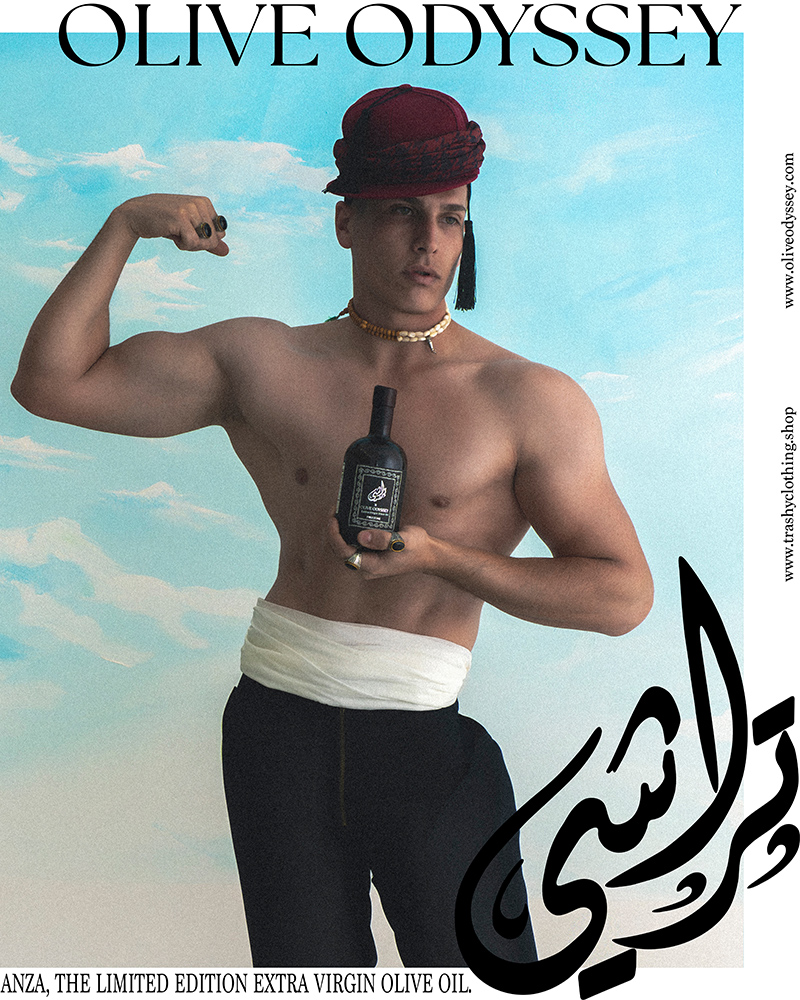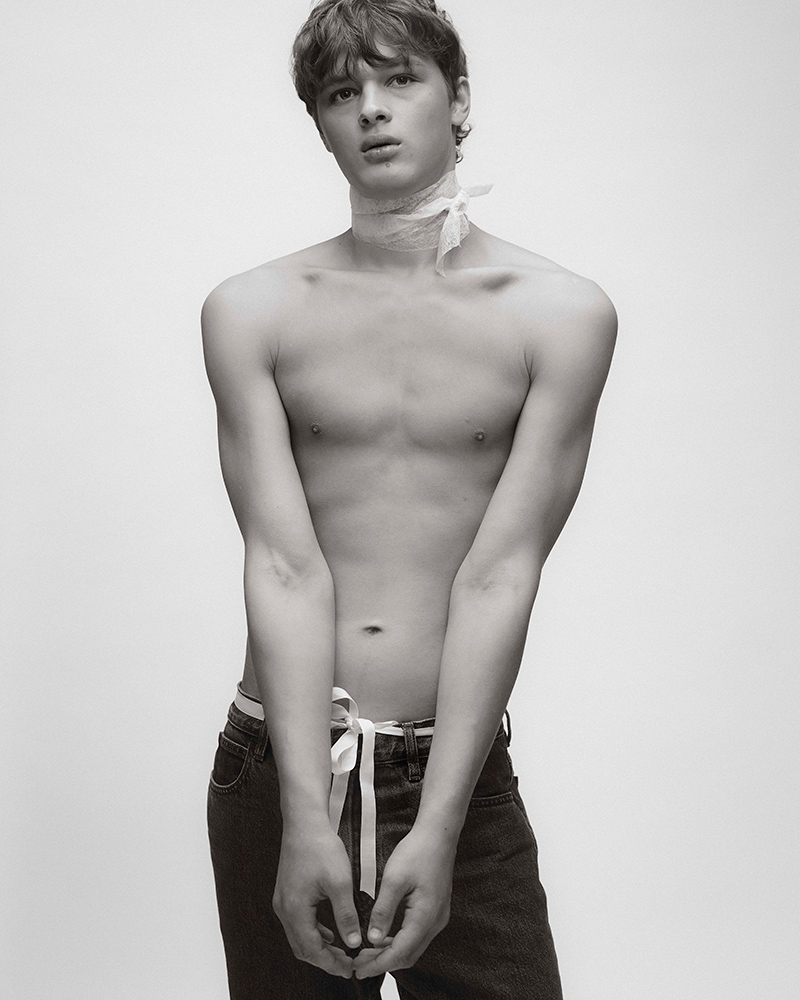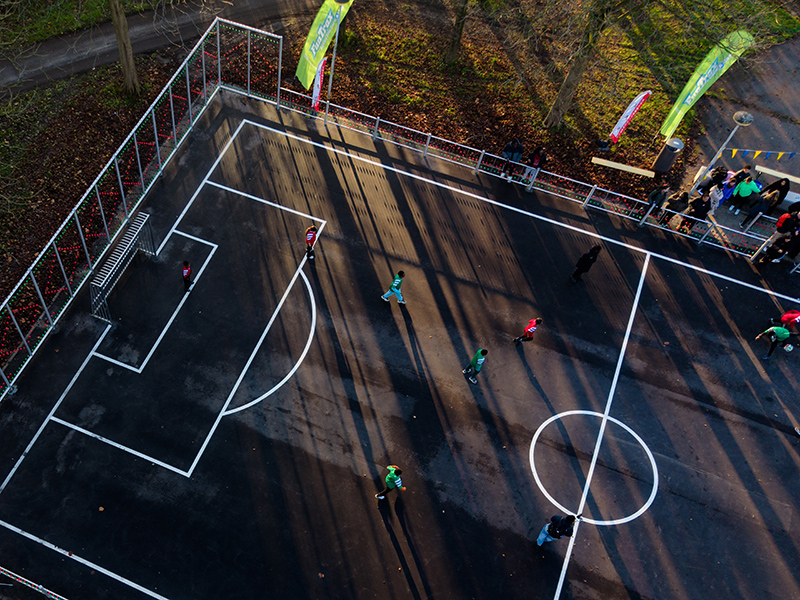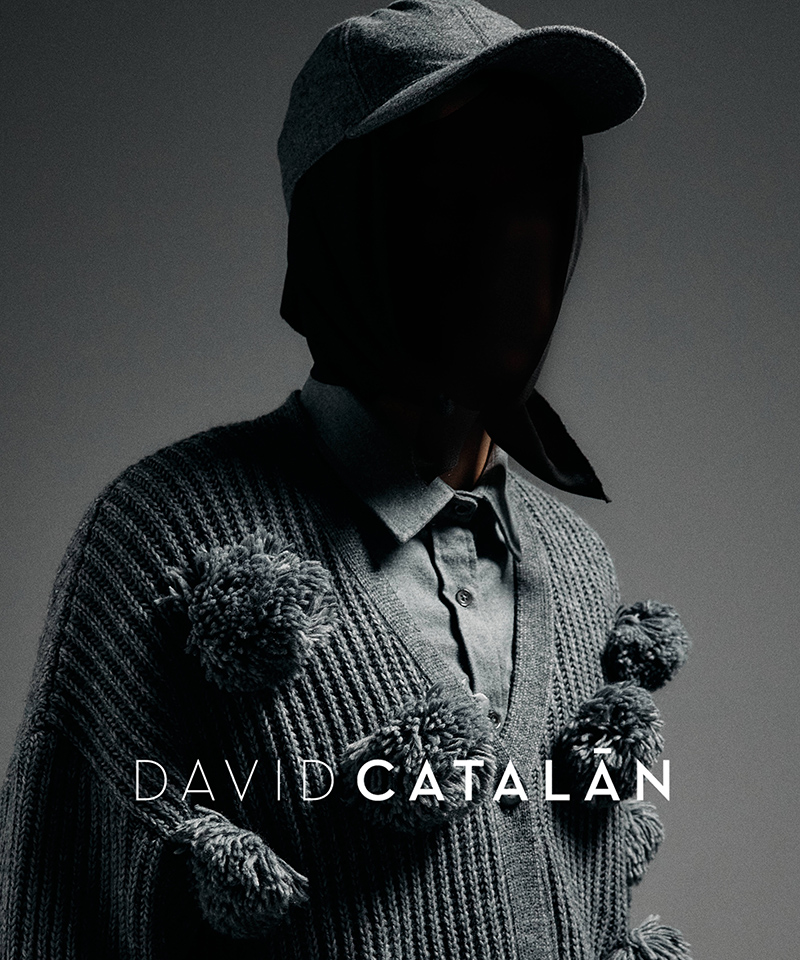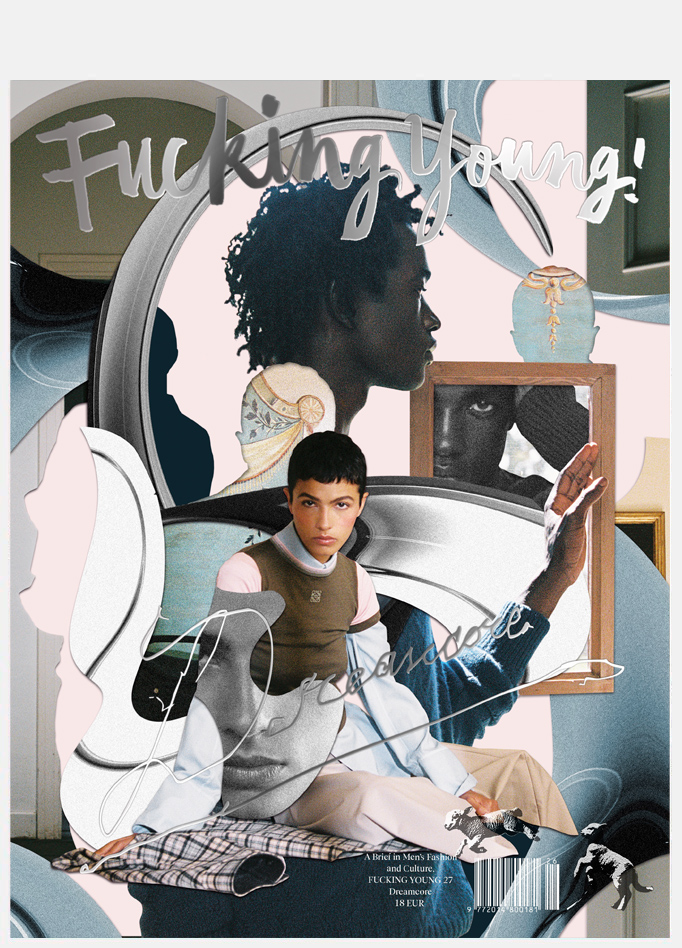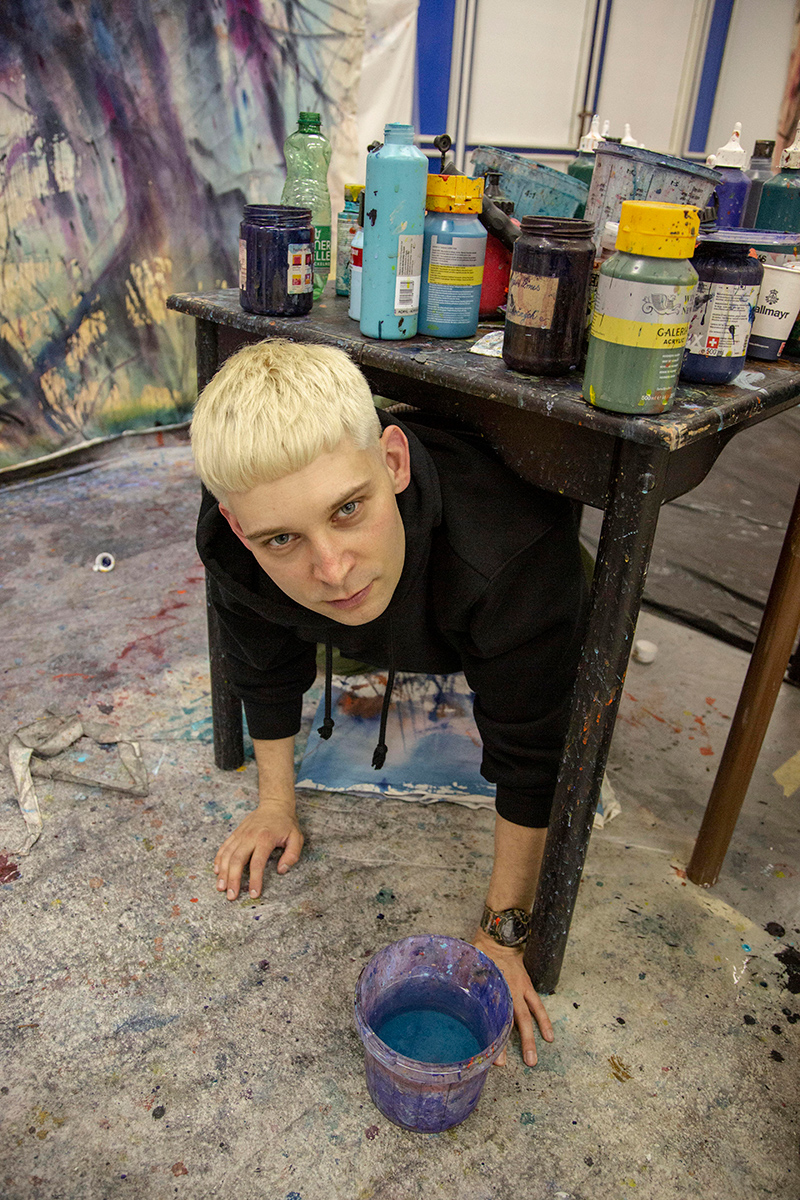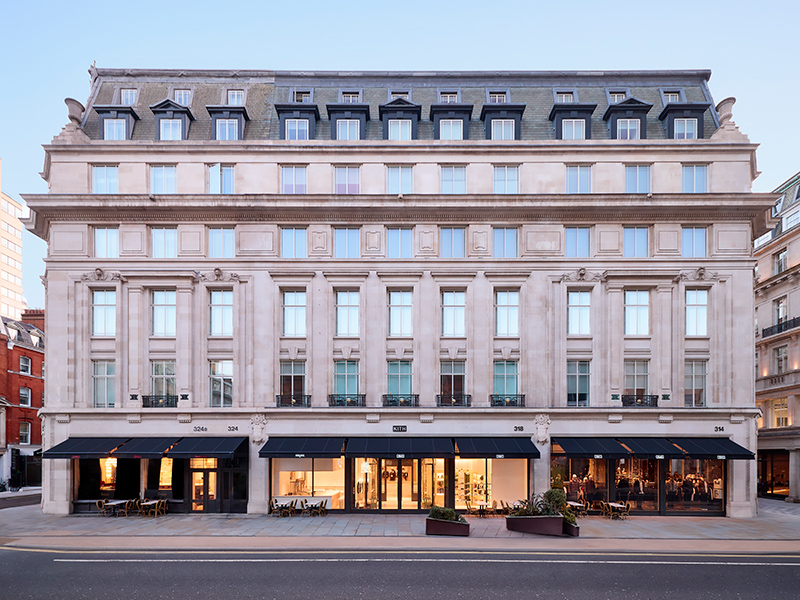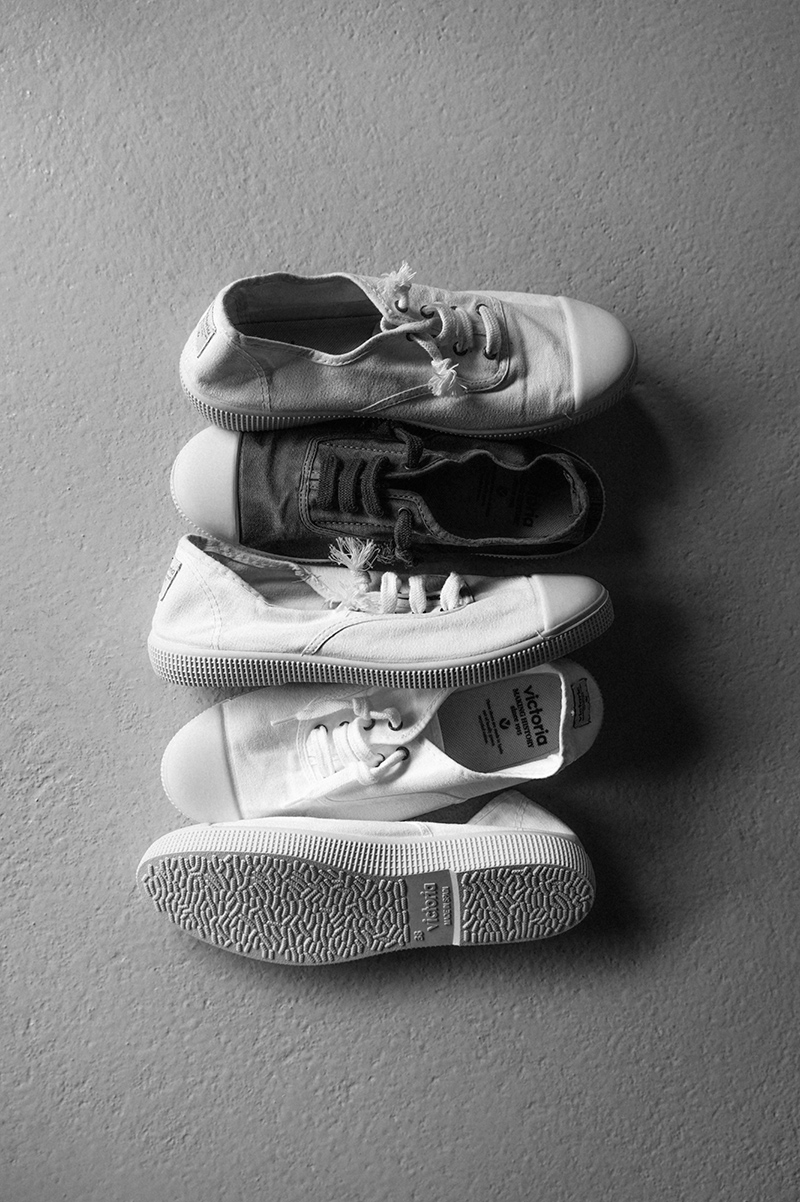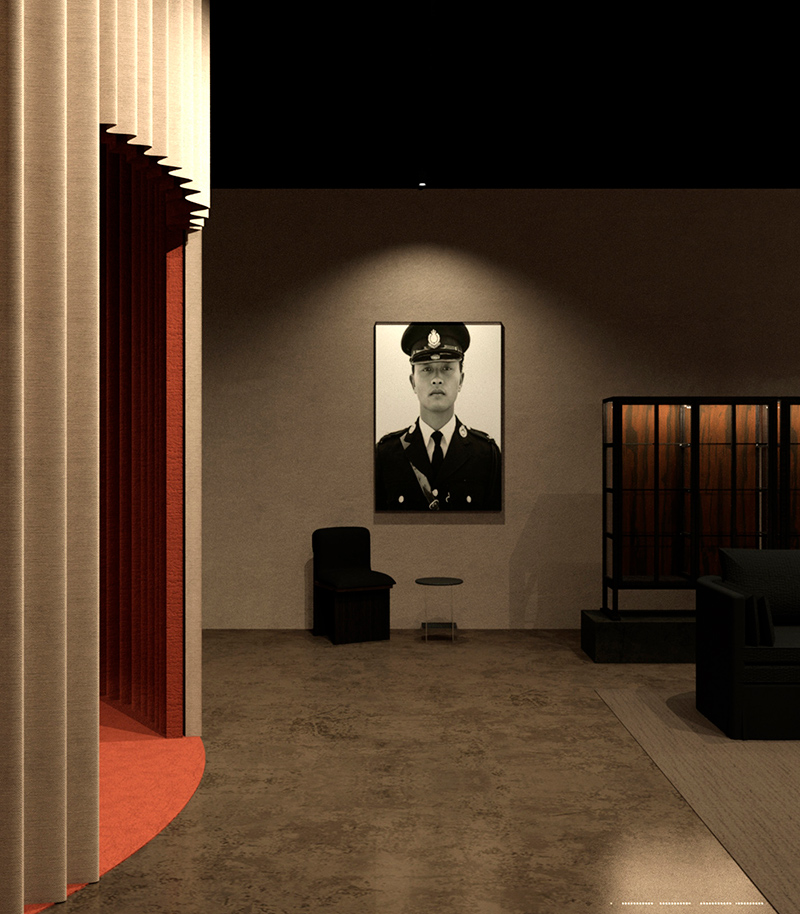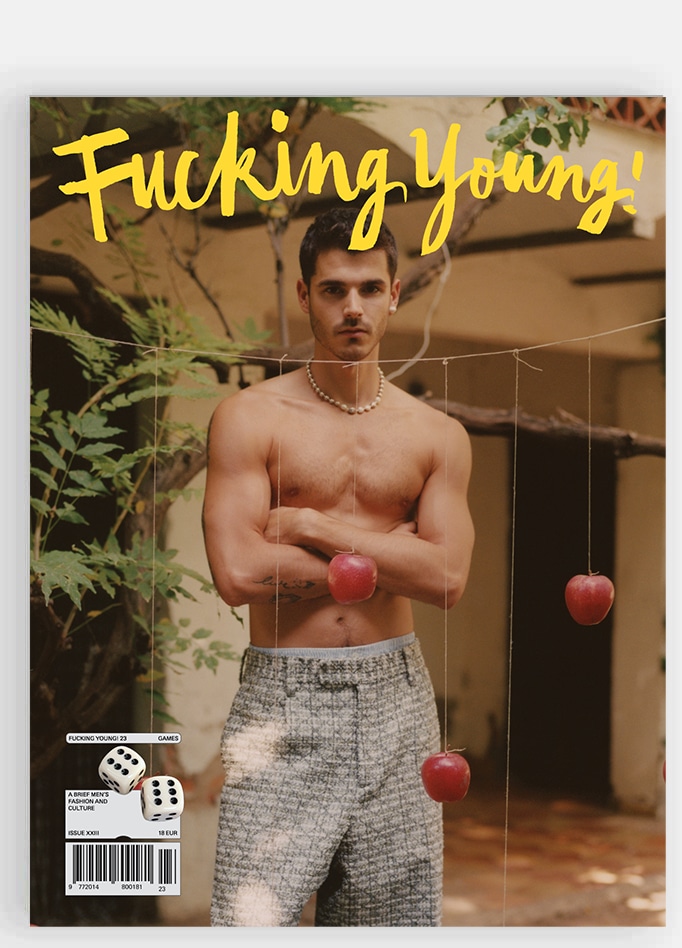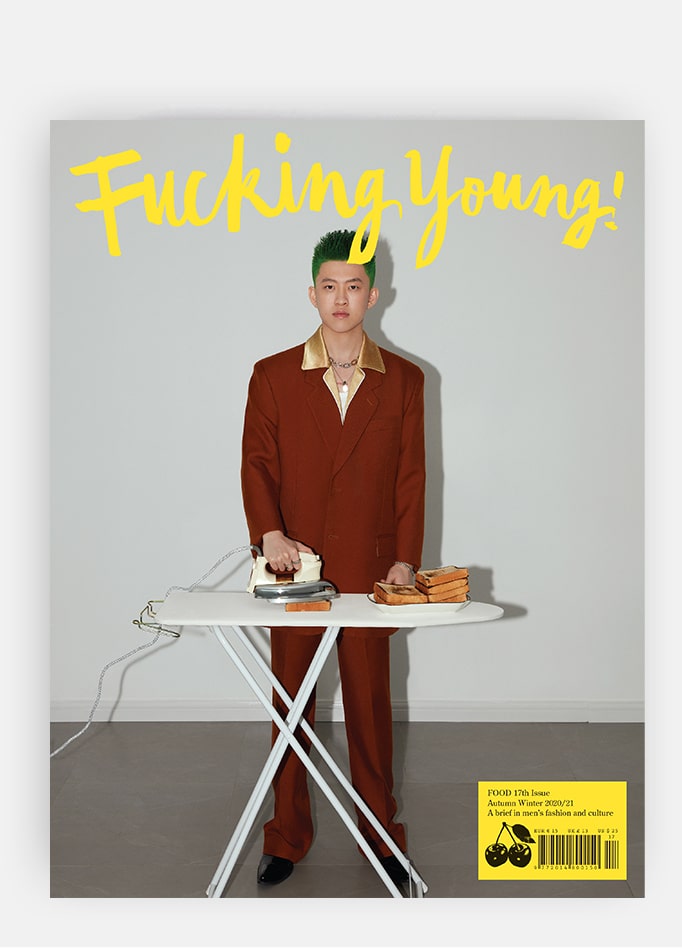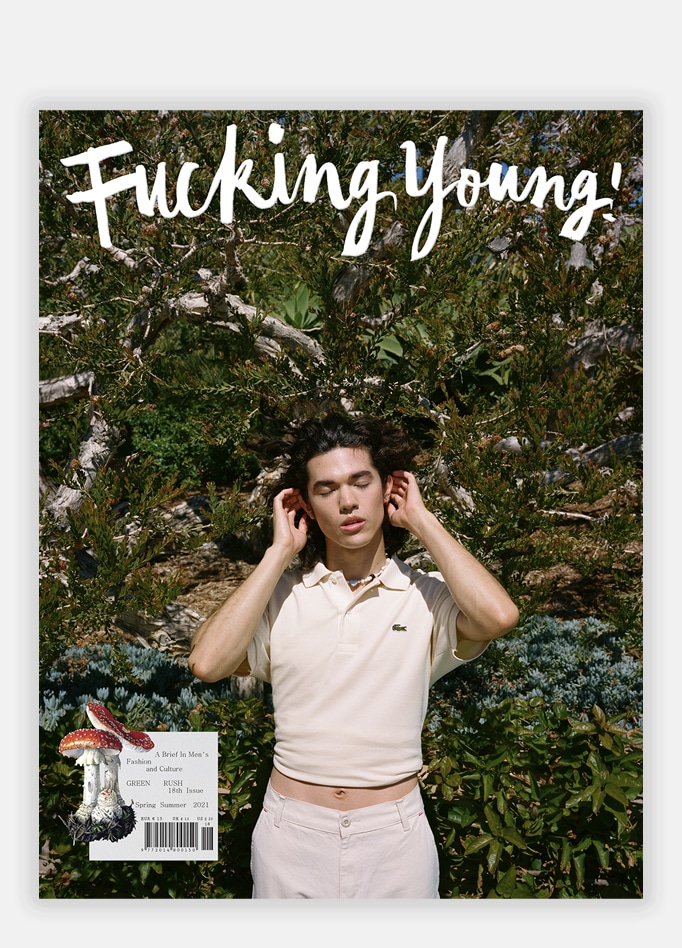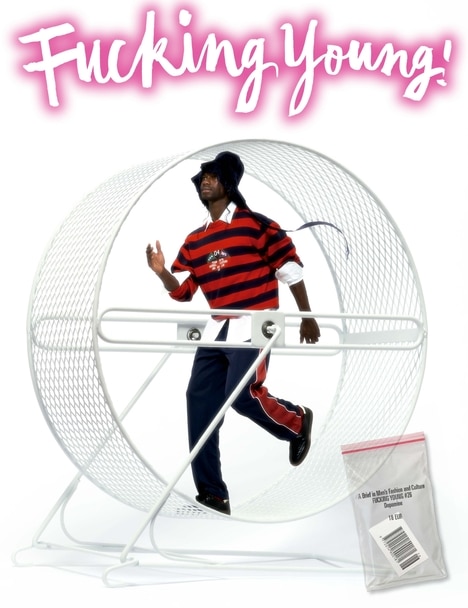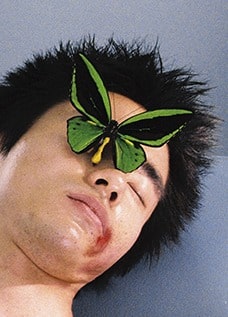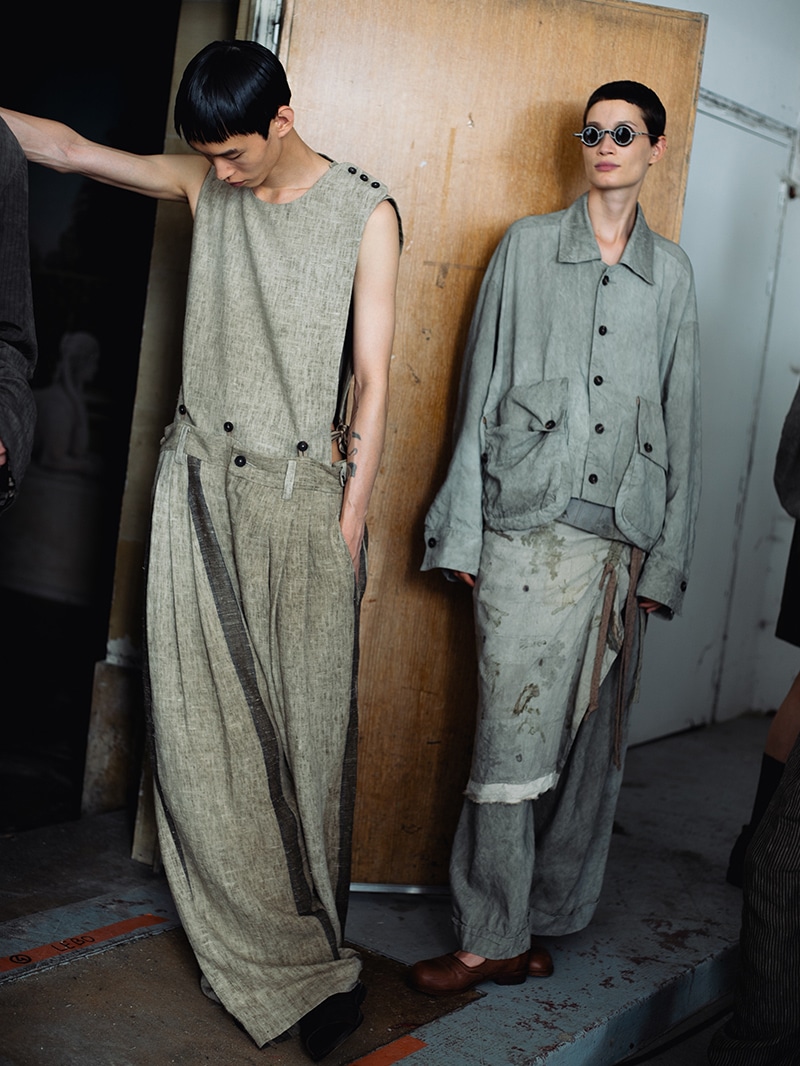
In Ziggy Chen’s Spring/Summer 2026 collection, PRITRIKE, the designer draws inspiration from quiet elemental power, primarily from the forces of nature and time. The collection’s name merges “primal” and “strike”, alluding to a foundational energy made up of softness, spontaneity, and intimacy. Made from hemp, silk, cotton, and linen, the garments give off a lived-in and elevated feel, telling stories of weathered stones, chipped lacquered wood, faded wallpaper, weather-beaten concrete, and worn metals. Treated with techniques like gold bonding and garment dyeing, the fabrics move between rawness and curation, silence and intensity.
We talked with Ziggy Chen to learn more about the thinking behind PRITRIKE, his process, his relationship with materials, with backstage photography from his Paris Fashion Week show by Leiya Wang.
PRITRIKE’s main concept fuses the ideas of “Primal” and “Strike”. What are the key elements in the collection that you feel best balance both ideas?
PRITRIKE is a fusion of the words “primal” and “strike.” “Primal” stands for returning to the original mindset I had when I first started making clothes—getting back to the very beginning. “Strike” represents setting out anew, trying to examine my own creative process from perspectives different than before. Overall, it serves as a reminder to myself, a sort of personal theme. In this collection, I think the elements that best balance these two concepts are the use of webbing, hemp ropes, and cords—connecting and fastening two basic garments together so that different people can wear them in unique ways.
The Spring/Summer 2026 collection celebrates natural materials such as hemp, silk, cotton, and linen. What draws you to these specific fibers when expressing the raw yet refined energy of the collection?
I’ve always had a natural preference for these fibers—they speak to me on an instinctive level. They hold a strong appeal not just because of their inherent rustic beauty and character, but also because of the comfort they bring, which is equally important.
You mention the garments are treated with different techniques, like bonding with a layer of gold. Could you walk us through how these treatments transform the textiles and impact the final silhouette?
The choice and use of fabrics and trims are crucial to expressing the texture of a garment. I want the clothes to feel comfortable on the body, without overly altering the wearer’s natural shape. As for silhouettes, we favor a more organic approach. Thus, when selecting fabrics—from yarn choices to the weaving structures, dyeing, and finishing processes—we consider aspects like drape and softness. For instance, I’m particularly drawn to different twill weaves, and I love various uneven dyeing techniques. This season’s gold and white coatings require hand applications to achieve the right effect. I enjoy trying new things. Of course, the final visual result depends on the established color palettes and patterns, but that’s not the most important step—we prefer to look at everything together to find balance. Whether these treatments are done on the fabric stage or after the garment is made, our thinking about the fabric and the clothing stays the same.
What inspires you to use these special treatments, and what is your relationship to them? Have they been used in your past collections?
Experimenting with textiles is something we’ve always done—it’s one of the joys of this work, not just something for this season. I think traditional art and architecture, like Song dynasty paintings and Suzhou gardens, have deeply shaped our sense of beauty. Applying my understanding of this traditional aesthetic to different materials is simply a pleasure.
The collection is described as “silent and intense”. For you, is silence a kind of rebellion or resistance in today’s fashion world?
I rarely think about such complex questions. I’m not young anymore; I’ve reached an age of calm. I simply follow my own desires to create things that bring joy, hoping they make others feel happy and confident too. On the other hand, my daily work is already quite fulfilling—I truly have no time to concern myself with unrelated matters.
PRITRIKE is heavily influenced by nature, raindrops that distort surfaces, and rain-soaked summer walls. What does the relationship between nature and decay mean to you, and to the world you’re creating through fashion?
Seen purely, the relationship between nature and decay is a cycle—a process of nature regulating itself, which is a kind of beauty. In previous collections, I’ve always held a strong curiosity about different traditional cultures, which I see as a form of learning, but that’s enough for now. Starting this season and moving forward, I want to focus more on the details and everyday moments of contemporary life, especially those often overlooked.
If PRITRIKE were a season, a sound, or a memory, what would it be?
For me, this collection is already in the past—it’s history. As for what it might be to others, I’m not sure. It’s up to fate.
To finish off, what does “Fucking Young!” represent to you?
To me, “fucking young” represents a spirit of staying true to oneself, unconstrained by formalities.
